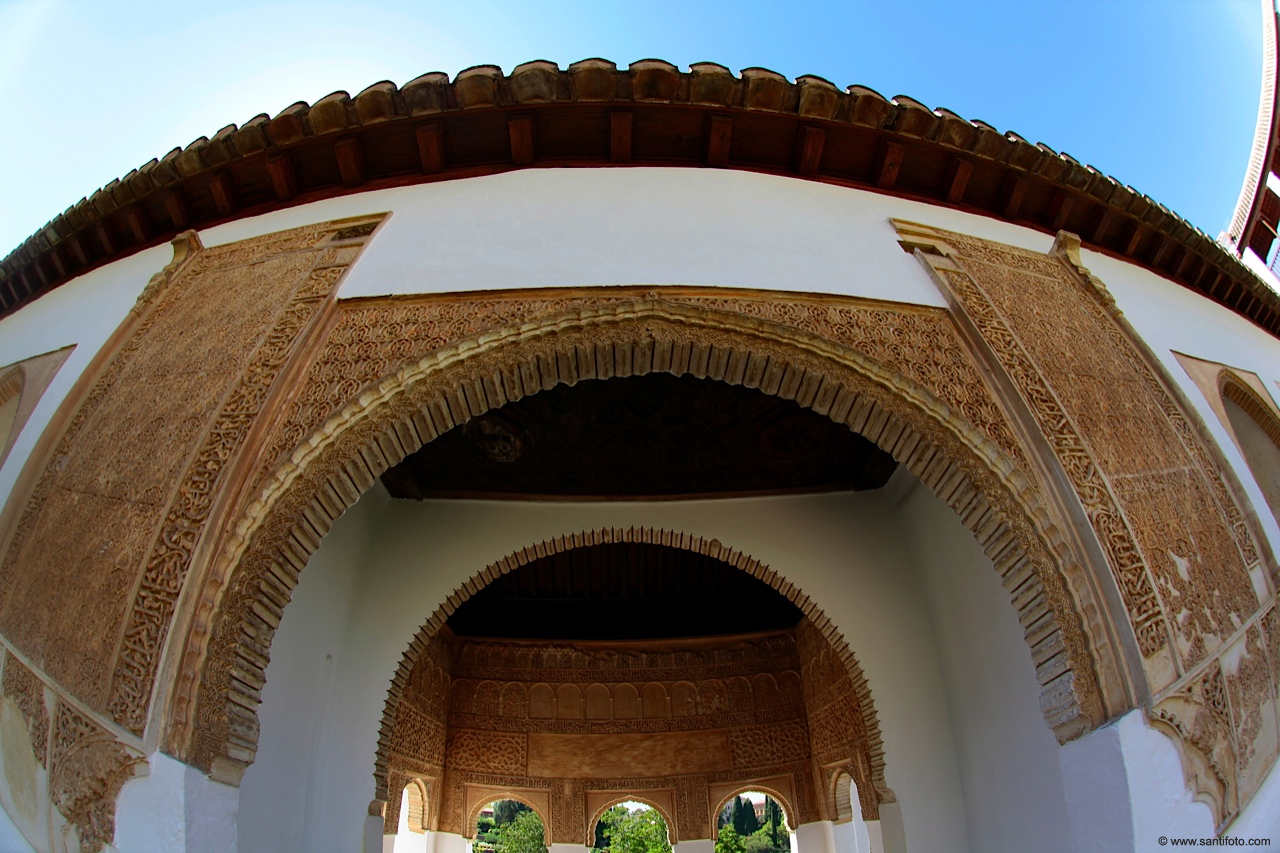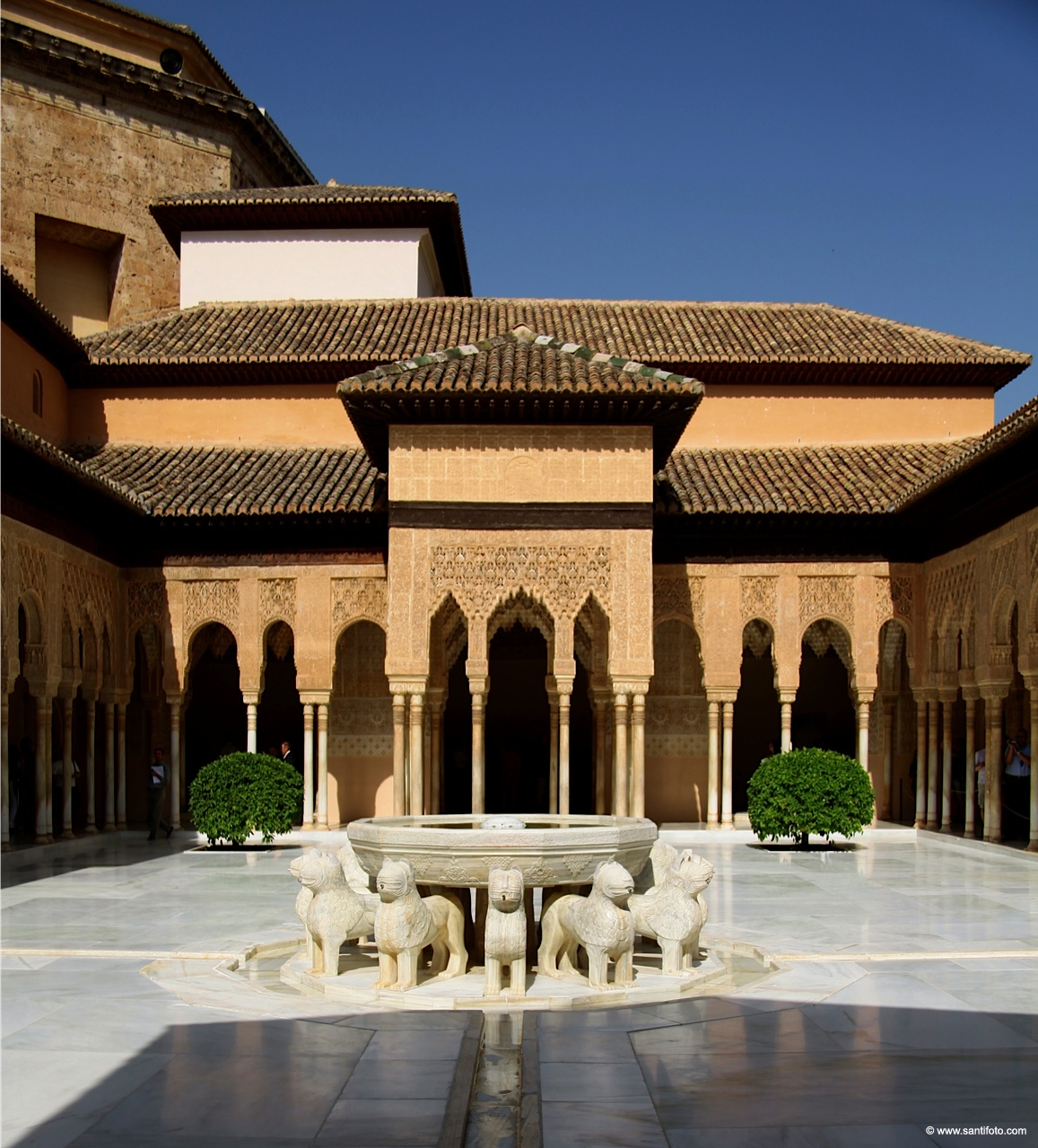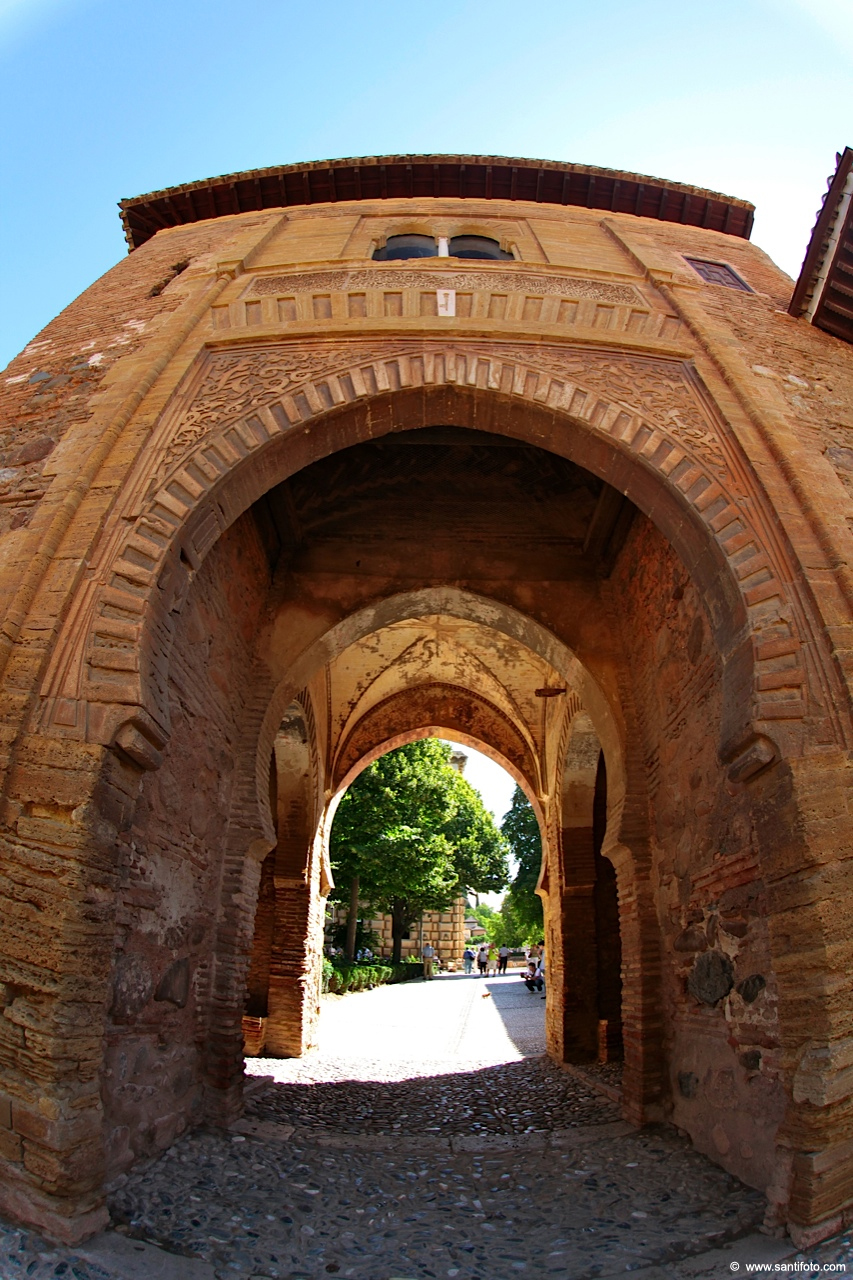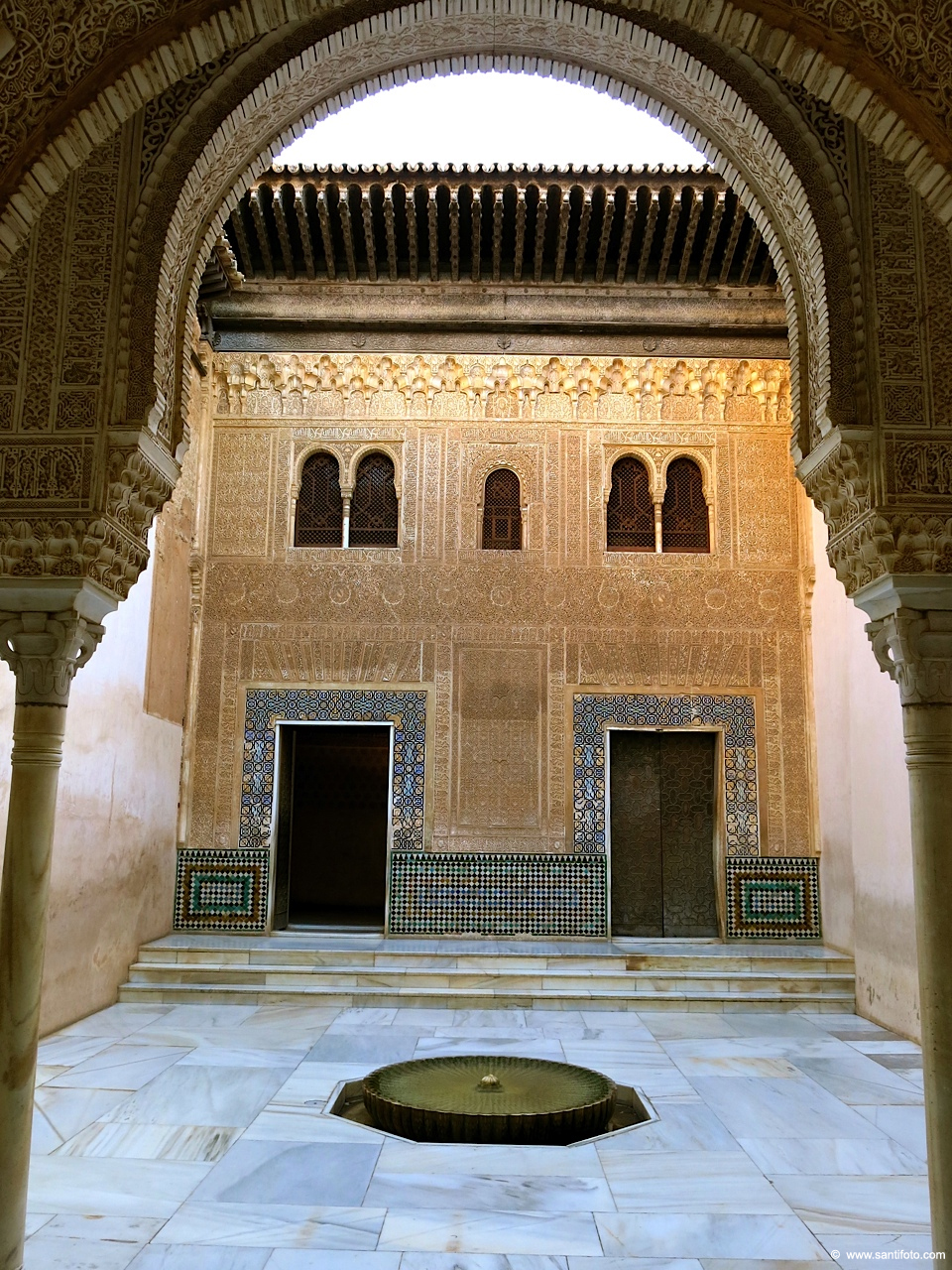La Alhambra in Granada
The Alhambra is one of the most serenely sensual and beautiful buildings in the world, a place where Moorish art and architecture reached their pinnacle. A masterpiece for you to admire, and it is in Granada , a city full of culture and history. Experience the beauty and admire this marvel of our architectural heritage. Let it touch your heart.
La Alhambra was so called because of its reddish walls (in Arabic, («qa'lat al-Hamra'» means Red Castle ). It is located on top of the hill al-Sabika, on the left bank of the river Darro, to the west of the city of Granada and in front of the neighbourhoods of the Albaicin and of the Alcazaba.
History
Granada is the Alhambra and the gardens, the Cathedral, the Royal Chapel, convents and monasteries, the old islamic district Albayzin where the sunset is famous in the world or the Sacromonte where the gipsys perform flamenco shows in the caves where they used to live...Granada is this and many more things.
The Alhambra is located on a strategic point in Granada city, with a view over the whole city and the meadow ( la Vega ), and this fact leads to believe that other buildings were already on that site before the Muslims arrived. The complex is surrounded by ramparts and has an irregular shape. It limits with the valley of the river Darro on its northern side, with the valley of al-Sabika on its southern side and with the street Cuesta del Rey Chico on the eastern side. The Cuesta del Rey Chico is also the border between the neighbourhood of the Albaicin and the gardens of the Generalife, located on top of the Hill of the Sun (Cerro del Sol).
The first historical documents known about the Alhambra date from the 9th century and they refer to Sawwar ben Hamdun who, in the year 889, had to seek refuge in the Alcazaba, a fortress, and had to repair it due to the civil fights that were destroying the Caliphate of Cordoba, to which Granada then belonged. This site subsequently started to be extended and populated, although not yet as much as it would be later on, because the Ziri kings established their residence on the hill of the Albaicin.
The castle of the Alhambra was added to the city's area within the ramparts in the 9th century, which implied that the castle became a military fortress with a view over the whole city. In spite of this, it was not until the arrival of the first king of the Nasrid dynasty, Mohammed ben Al-Hamar (Mohammed I, 1238-1273), in the 13th century, that the royal residence was established in the Alhambra. This event marked the beginning of Alhambra's most glorious period.
First of all, the old part of the Alcazaba was reinforced and the Watch Tower (Torre de la Vela ) and the Keep (Torre del Homenaje) were built. Water was canalised from the river Darro, warehouses and deposits were built and the palace and the ramparts were started. These two elements were carried on by Mohammed II (1273-1302) and Mohammed III (1302-1309), who apparently also built public baths and the Mosque (Mezquita), on the site of which the current Church of Saint Mary was later built.
Yusuf I (1333-1353) and Mohammed V (1353-1391) are responsible for most of the constructions of the Alhambra that we can still admire today. From the improvements of the Alcazaba and the palaces, to the Patio of the Lions (Patio de los Leones) and its annexed rooms, including the extension of the area within the ramparts, the Justice Gate (Puerta de la Justicia ), the extension and decoration of the towers, the building of the Baths (Baños), the Comares Room (Cuarto de Comares) and the Hall of the Boat (Sala de la Barca ). Hardly anything remains from what the later Nasrid Kings did.
From the time of the Catholic Monarchs until today we must underline that Charles V ordered the demolition of a part of the complex in order to build the palace which bears his name. We must also remember the construction of the Emperor's Chambers (habitaciones del Emperador) and the Queen's Dressing Room (Peinador de la Reina ) and that from the 18th century the Alhambra was abandoned. During the French domination part of the fortress was blown up and it was not until the 19th century that the process of repairing, restoring and preserving the complex started and is still maintained nowadays.
The Nasrid architecture marked the end of the glorious period that started with the Umayyads in Cordoba in the 8th century. The architects of the Cordovan mosque, which was built a long time before the Alhambra , did not influence this architecture. It includes some of the typical elements of the andalusian architecture, such as the horseshoe arch with sprandel (square wide frame which envelopes the arch) and the arch scallops (arch scallop of triangular shape), as well as its own special elements such as the capitals of the columns of the Alhambra.
The greatest concern of the architects of the Alhambra was to cover every single space with decoration, no matter the size of the space. No decorative element was enough. Most of the interior arches are false arches, with no structure; they are there only to decorate. Walls are covered with beautiful and extremely rich ceramics and plasterwork. And the coverings have wooden frames that have been exquisitely carved, etc.
Even though the Muslim art bans the representation of figures, the decorating themes in the Alhambra are quite varied. The classical calligraphic decoration is used, in particular cursive and kufic inscriptions, which reproduce the words of Zawi ben Ziri (founder of the Nasrid dynasty): "Only God is Victor", and poems written by different poets of the court. The decorative elements most often used by these architects were stylised vegetal forms, interlacing decoration and the nets of rhombuses.
The Alhambra of Granada was built with its own special type of column, which is not used in any other building. This column has a very fine cylindrical shaft, the base of which has a big concave moulding and is decorated with rings on the top part. The capital is divided into two bodies and the first one, cylindrically shaped, has a very simple decoration and a prism with a rounded-angled base and stylised vegetal forms as decoration. One of the most impressive decorative elements used in the Alhambra is the mocarabe vault, formed by little cells or alveoluses placed one on top of the other one and which may be admired in the Hall of the Abencerrajes (Sala de los Abencerrajes) and the Hall of the Two Sisters (Sala de las Dos Hermanas).
Many art works were destroyed by Arab Catholics. The Alhambra is the coexistence of religions in Spain. During the years 1700's and 1800's the Alhambra was occupied by beggars and the homeless. Parties were in a state of ruin and neglect. In 1808 to 1812, the Alhambra was occupied by Napoleon's troops. The Alhambra was preserved until 1870 when it was declared a national monument.
After the arrival of the Christians to the city, many of the Muslim inhabitants migrated to Africa . The inhabitants that stayed in Granada gathered in the neighbourhoods of the Albaicin and the Alcazaba until the expulsion of the Moriscos (Moorish inhabitants that converted to Christianity). The Moriscos were expelled from the country between 1568 and 1571, as a consequence of the uprisings in the Alpujarra mountains. Meanwhile, the city was being rebuilt and converted to Christianity, at the same time as it maintained the importance it had had during the Muslim period. Granada paradoxically became the headquarters of the Archbishopric and the Royal Chancellery (Real Chancillería) was established. The emperor Charles V created a university in 1526 and established the Court in the Alhambra , but, in exchange, Granada started losing its Arabic roots when the Renaissance and the Baroque periods developed.
The Golden Age also left its print in Granada and the city developed a very intense artistic activity. A great number of buildings, churches, façades, canvases, sculptures, etc. decorate every spot of the city, as an explosion of creativity that seems to be saying goodbye to the glorious moments of the past.
The new century brought a stop to the growth of the Granada city. During the French occupation the Alhambra was nearly destroyed, some of its buildings were blown up and many of the city's works of art were stolen. Hardly anything was done in exchange, a few buildings of artistic value were built, but in general the city and the whole country were left mentally, materially and economically exhausted. Nevertheless, once the country was liberated from the French occupation, not many improvements were achieved. Revolutions and revolts took place at the end of the 19th century and carried on destroying the city. Afterwards, the city suffered a building boom (which destroyed the neighbourhood of the Mosque in order to build the Gran Via (one of the main streets of the city)), the crisis of the sugar refineries and political revolts until 1936.
During the Spanish Civil War, Granada did not suffer great damage, although the villages around and the capital city were on opposing sides. During many years the economy of the city was based on the services sector and it went through a wild real estate speculation process and an uncontrolled growth.
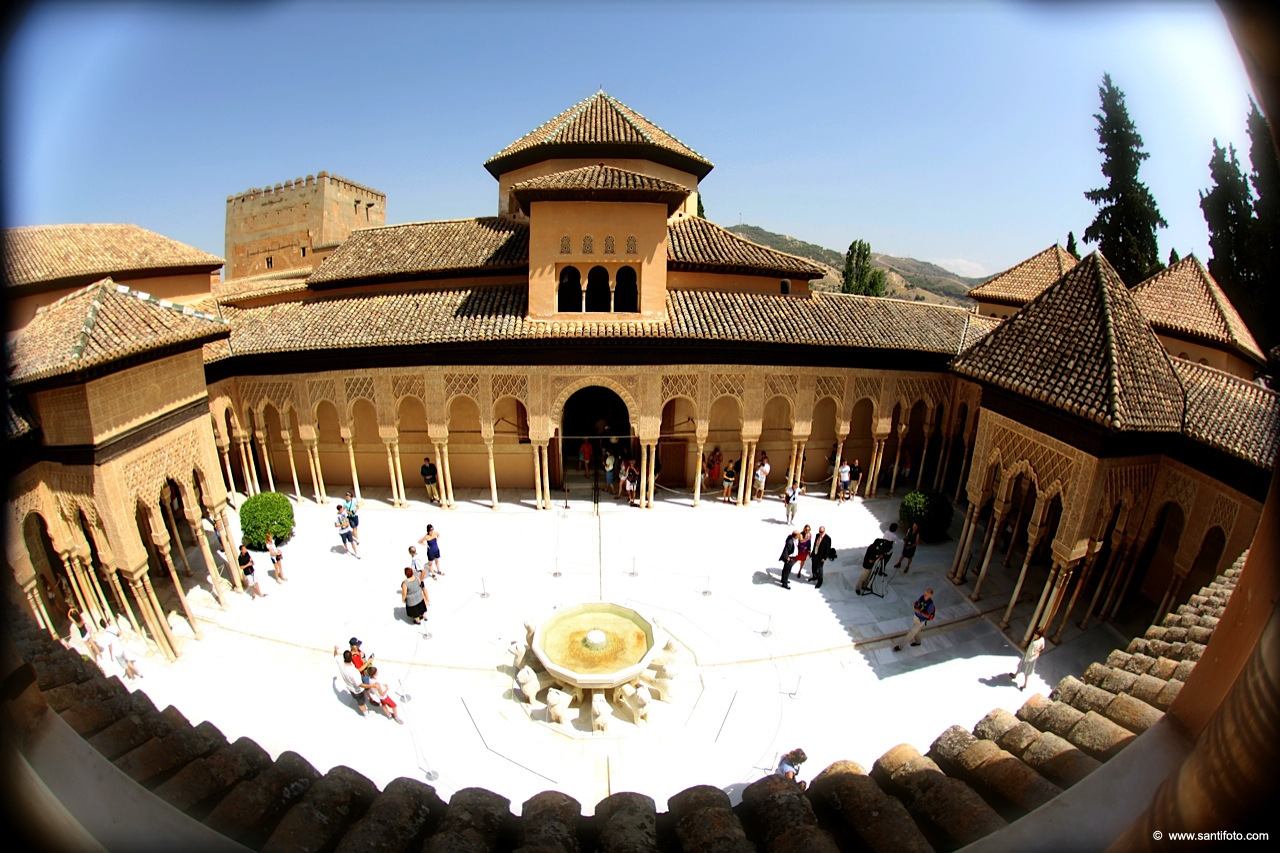
"If we were to visit one city in Spain, that should be Granada". Ernest Hemingway.
"Every curious traveler keeps Granada in his heart, even without having visited". William Shakespeare.
"What work light leaves Granada" Federico García Lorca (1898-1936)
"You should see Alhambra and Granada It's like a fairy work; It is magic, glory and love, not like anything known" François René (1768-1848). French writer and traveler.
"I begin to think that there is an even greater pleasure than to see Granada and is to see her again "Alexandre Dumas (1802-1870)














%20(1).JPG)
.JPG)

